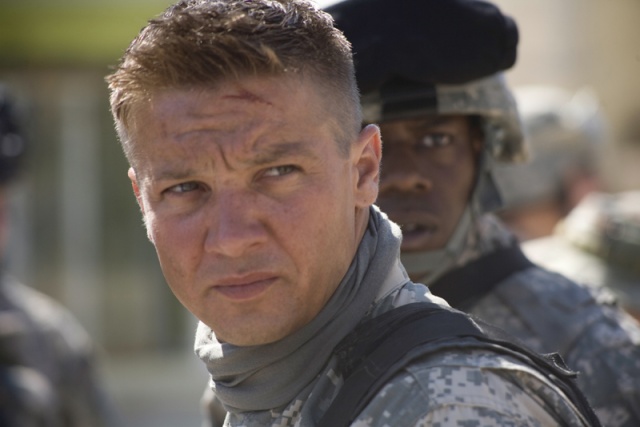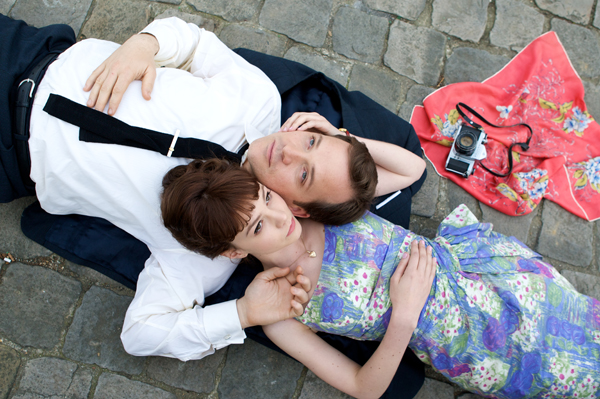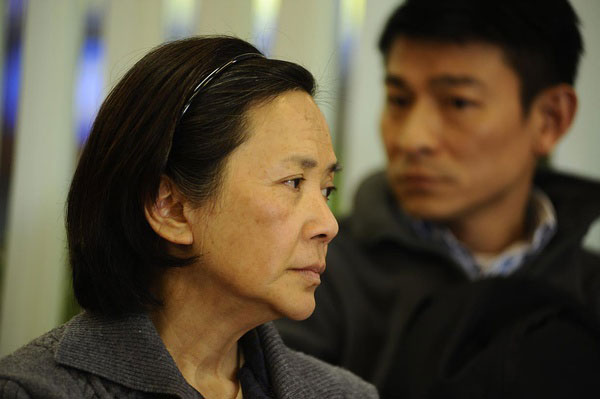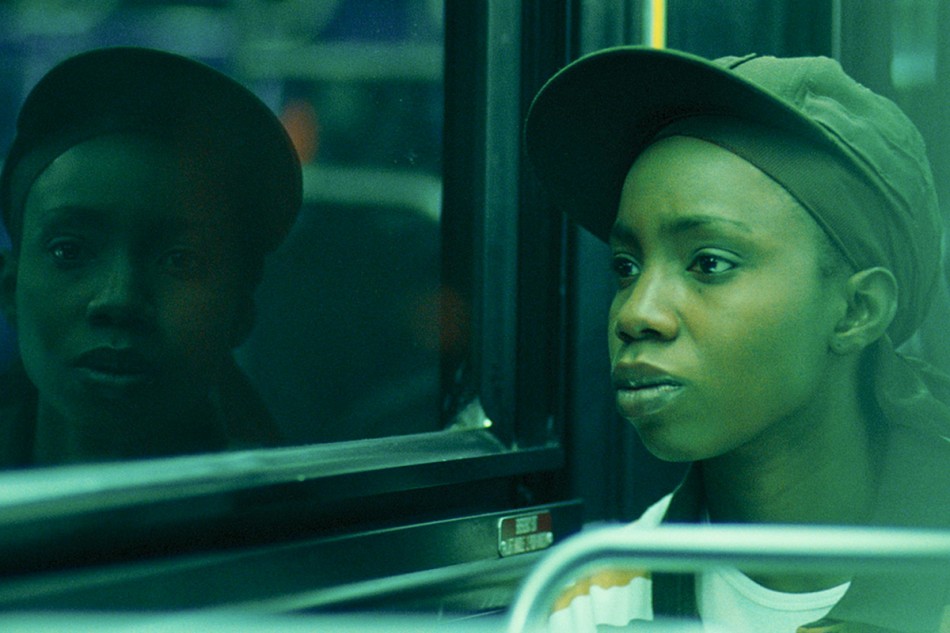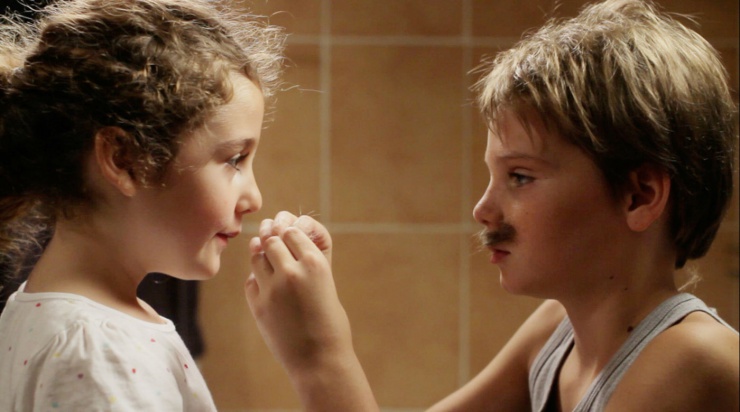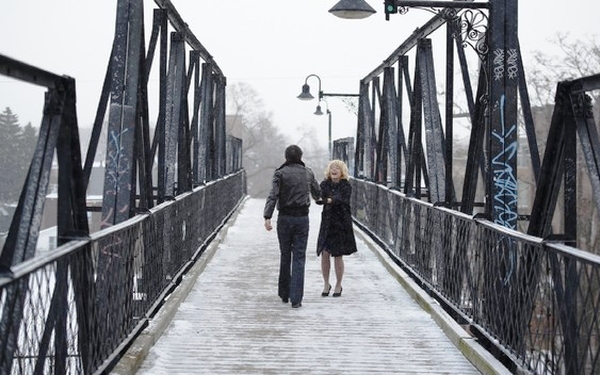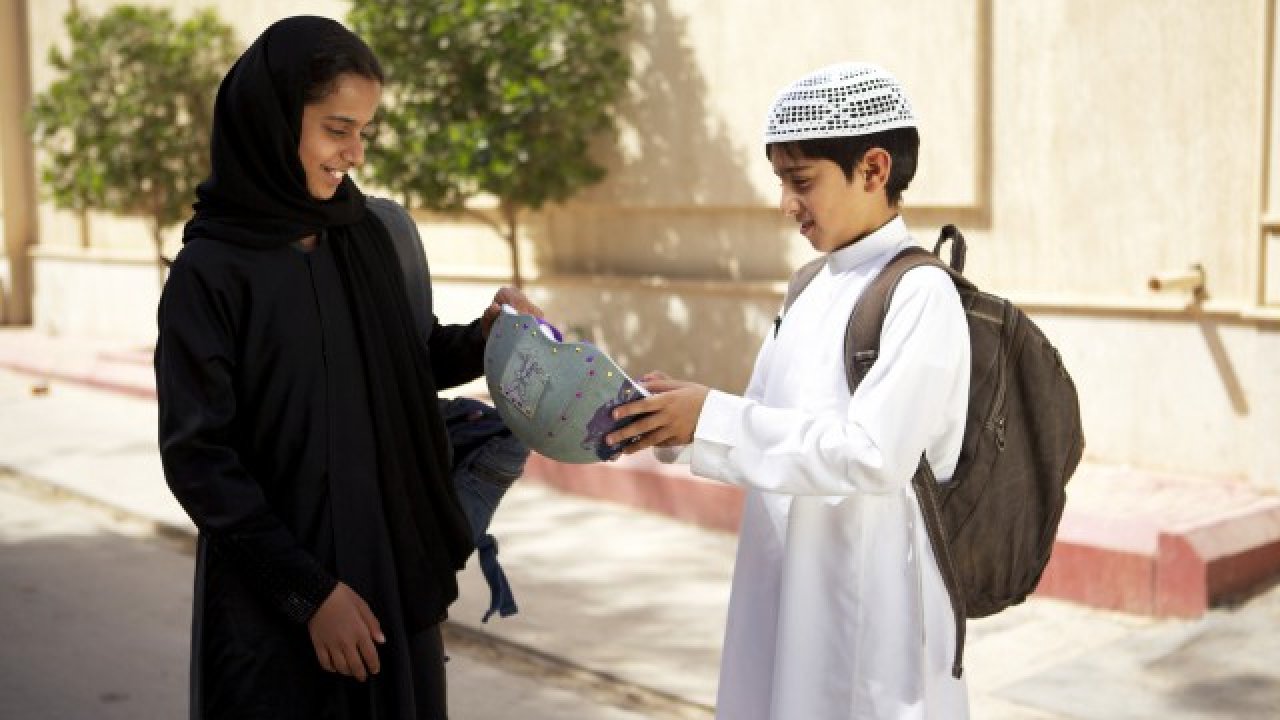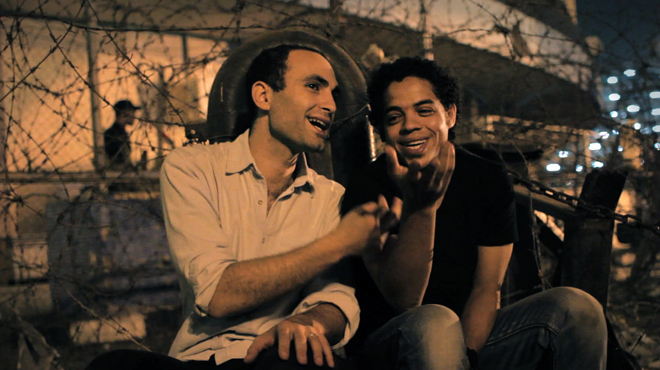18. The Hurt Locker (Kathryn Bigelow, 2008)
This exceptional war film, which portrays the story of a three-man bomb disposal team during the Iraq War, guaranteed Bigelow’s accomplishment as first woman to win the Academy Award for Best Director in 2009.
The Hurt Locker is a powerful action film directed by a woman who sides with the soldiers. It offers honest clarity on the perception of a U.S. combatant’s mind. While depicting the violent side, Bigelow manages to withdraw the tragedy and reality of these soldiers’ lives on the field. She portrays the long and painful nightmare of those men who must patrol—even if they are heavily armed moving targets—and are permanently endangered by the hidden “roadside bombs,” which can be ignited by booby-traps or telephones.
Hurt Locker is both cringing and exciting, and it abandons all conventional narrative rules. The title refers to the physical trauma of being constantly in close proximity to the deafening blast of an explosion and the compressed silence, which imprisons pain and doesn’t disappear. Bigelow’s work is outstanding in nearly making the audience feel it, too.
19. An Education (Lone Scherfig, 2009)
Based on the memoir of the same name by British journalist Lynn Barber, Carey Mulligan plays sixteen-year old Jenny, who’s seduced by an older and charming con-man named David (Peter Saarsgard). The screenplay, written by Nick Hornby, sets the story in 1961 and solidifies Jenny’s character above everything else. Even the “romance” in the story is due to her mind, her lust for life, constant excitement, and eagerness to experience. David, who grows extremely fond of Jenny, is good-looking, well-spoken, and extremely polite.
What makes this a magnificent watch is Mulligan, in her first major feature role, who is easily comparable to Audrey Hepburn for the grace and light Mulligan brings to the screen. Though the final part of the film may confuse much of the audience, An Education nonetheless is a charming coming-of-age tale made wonderful by the director’s astute attention to detail, for she is subtle and cautious with the pacing and tone.
20. A Simple Life (Ann Hui, 2011)
Inspired by the true story of producer Roger Lee and his servant, the film depicts the relationship between Lee (Andy Lau) and a woman, Sister Peach, who has worked for four generations in Lee’s family.
It portrays the life of Ah Tao, an orphan in the Japanese occupation of Hong Kong, who spent her life serving four generations of a Chinese family and is – at the time of the film – the servant of the only family member left still living in China, Roger. Everything from the silence they share when she gives him his meals, to the more complex aspects of their relationship, are delicately handled and make the film a quiet, yet moving, experience. A plot, which could easily be a drama about forgetting a person, turns out to be sweet when that someone is remembered. A Simple Life is refreshing and hopeful, and filmmaking wise, a noted character study.
21. Pariah (Dee Rees, 2011)
Director Dee Rees, who also wrote this contemporary drama, tells the story of an African-American teenager named Alike (Adepero Oduye), who is coming to terms with her identity as a lesbian. Pariah contains common elements most coming-of-age films have which primarily involve LGBT characters: the struggles; conservative family issues; falling in love with a friend, etc. Yet this is perhaps one of the few films that can accurately, naturally, and realistically portray these ideals, such as Alike and her pain.
The film is set mostly at night: the club she attends, the streets she walks, and on the bus she rides. Unfortunately, there is not a fairy tale happy ending, but what would most likely occur to someone in a similar situation. On a low budget, Dee Rees makes Bradford Young’s photography even more mesmerizing than what he did before in the originally filmed short film of the early 2000s.
22. Tomboy (Celine Sciamma, 2011)
In Tomboy, Zoé Héran brings to life a short-haired 10-year-old girl called Laure who, after moving to a new neighborhood, decides to introduce herself as a boy by the name Mikäel. Tomboy is refreshing take on how society regards “tomboys”—girls who dress like boys and do “typical” boyish things during their childhood. There’s some irony in the director’s portrayal of Laure’s superficial acceptance of her, yet they are shown as often ignoring her insecurities and wishes.
There’s a delicacy in how Sciamma recreates concepts such as confusion, whilst managing and exploring ambiguous genders. The family doesn’t concern themselves with anything other than the main characters’ problem; the two parents are in love, with a kid on the way, and the younger sister is shockingly supportive. This film doesn’t contain tragedy or over-analysis; what exists is a “tomboy” and summer adventures that may or may not mean something in the future.
23. Stories We Tell (Sarah Polley, 2012)
This film is an autobiographical documentary about the director’s own life events as told by her family, showing Polley’s specific interest in their points of view. It begins with an introduction of the family members and the description of one missing: the adorned mother, who apparently is an enthusiastic, loving person. Later, the family mentions Sarah’s conception, a family joke that implies Sarah looks nothing like her “father” and more like an actor who worked with her mother. The story proceeds by showing how Sarah searched for the truth.
Sarah’s option to allow equal time for everyone to share their side of the story makes Stories We Tell more about the narrative rather than her own truth-seeking. The Super 8 filming, plus the actors playing the younger characters, exhibits a time-machine, (almost) fictional effect. The film certainly proves Sarah Polley’s own talent for complex storytelling and makes it a memorable document, with the director herself often appearing and participating from behind the camera.
24. Wadjda (Haifaa al-Mansour, 2012)
Wadjda (Waad Mohammed) is an 11-year-old Saudi girl, who dreams of having a green bicycle, so she can race against her friend Abdullah, a boy from her neighborhood. What makes Wadjda special is that she refuses to be like the other girls, who are told that it isn’t acceptable for females to ride bicycles. The director’s not trying to make people feel sorry for Saudi women; she’s just telling the story of one girl who doesn’t let anything change her mind.
This Saudi Arabian-German production marked two important firsts in history: the first feature film shot entirely inside Saudi Arabia and the first feature-length one made by a female Saudi director. It took about five years for al-Mansour to make Wadjda, as the director spent most of her time receiving financial backing and film permission. Also having written the screenplay, al-Mansour received inspiration from neorealist films; the primary character is based on her young niece, as well as her own childhood experiences.
25. The Square (Jehane Noujaim, 2013)
In The Square, Egyptian-American documentarian, Jehane Noujaim, depicts the ongoing Egyptian Revolution of 2011 from its roots in Tahrir Square. The Square is an entrancing inside look at the series of revolutions and counterrevolutions that have shaken Egypt. Beautifully shot, well-structured and exhilarating, the film transforms from spontaneous and confusing to emotionally wrenching. It captures the fear people feel when it comes to the army and their shift between good and evil. Noujaim focuses on the right parts, and chooses the right ways to create a bigger impact on the audience.
The film’s greatness can also be attributed to other certain special people, such as the energetic revolutionary Ahmed Hassan, and the movie star Khalid Abdalla, who is often the spokesman for the revolutionaries. There are times where it might feel like explanations are in order, but Noujaim follows a stream that represents exactly how often confusing life is during a revolution.
Author Bio: Alex Gandra is a Portuguese writer and filmmaker.She graduated this year in New Communication Technologies from the University of Aveiro and is currently in a master’s degree in Digital Audiovisual. She spends too much time in cafés writing scripts and other kinds of texts you can find at medium.com/@gandra_le. She’s also writing a book she hopes to finish some day.
